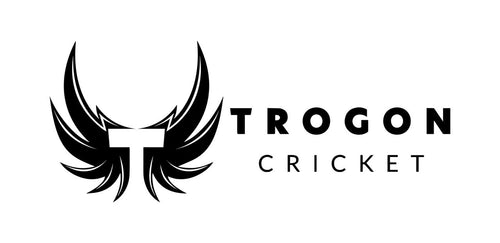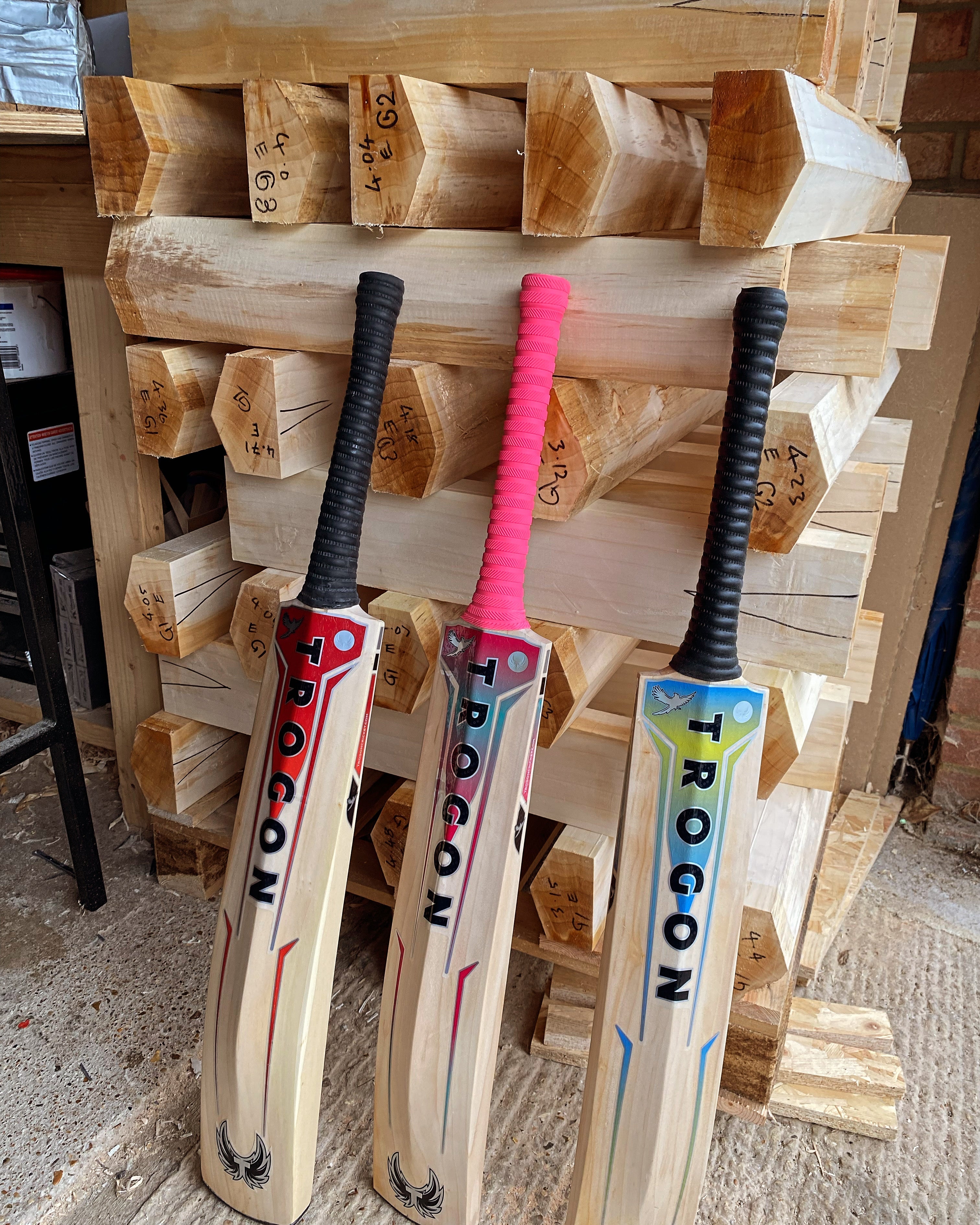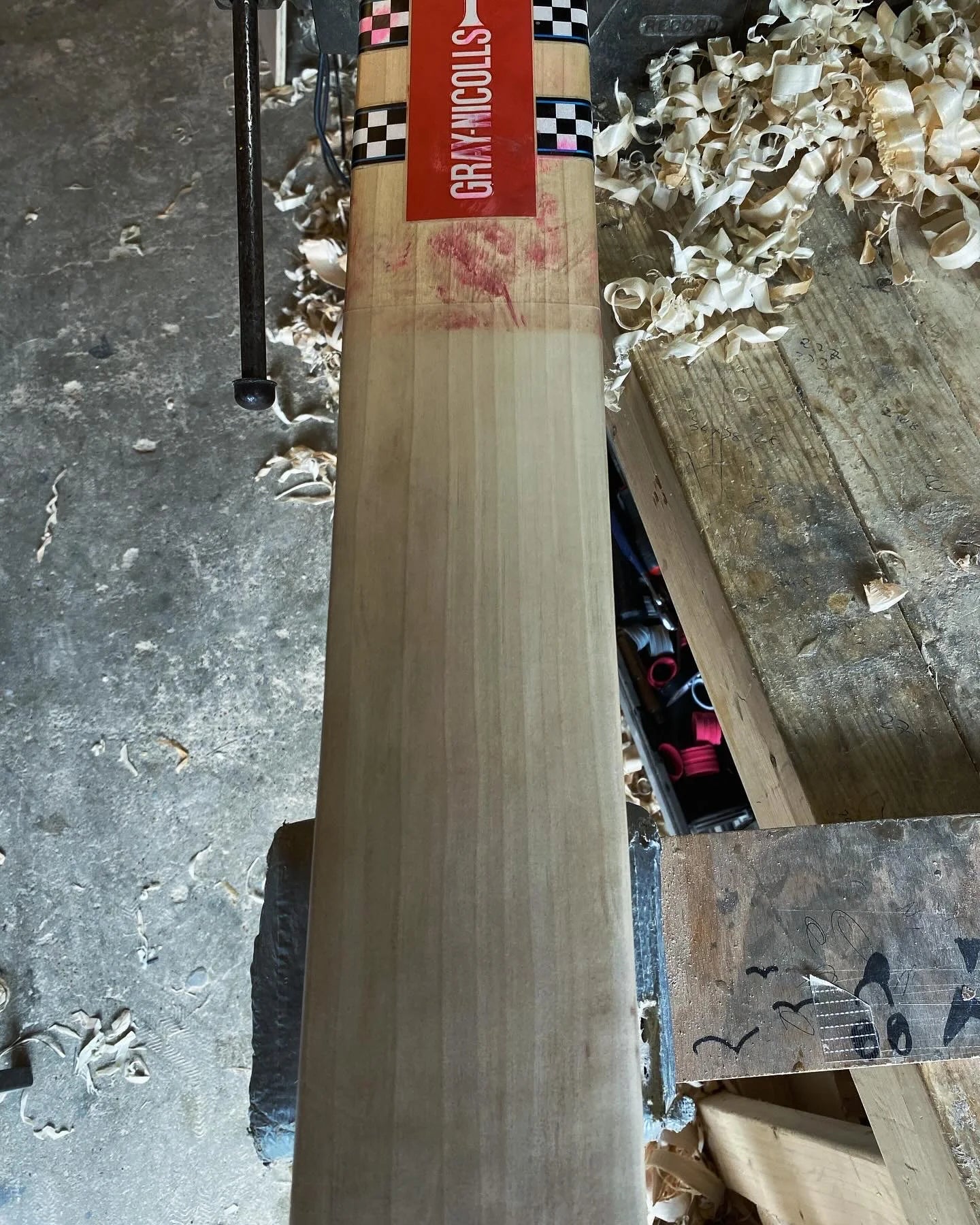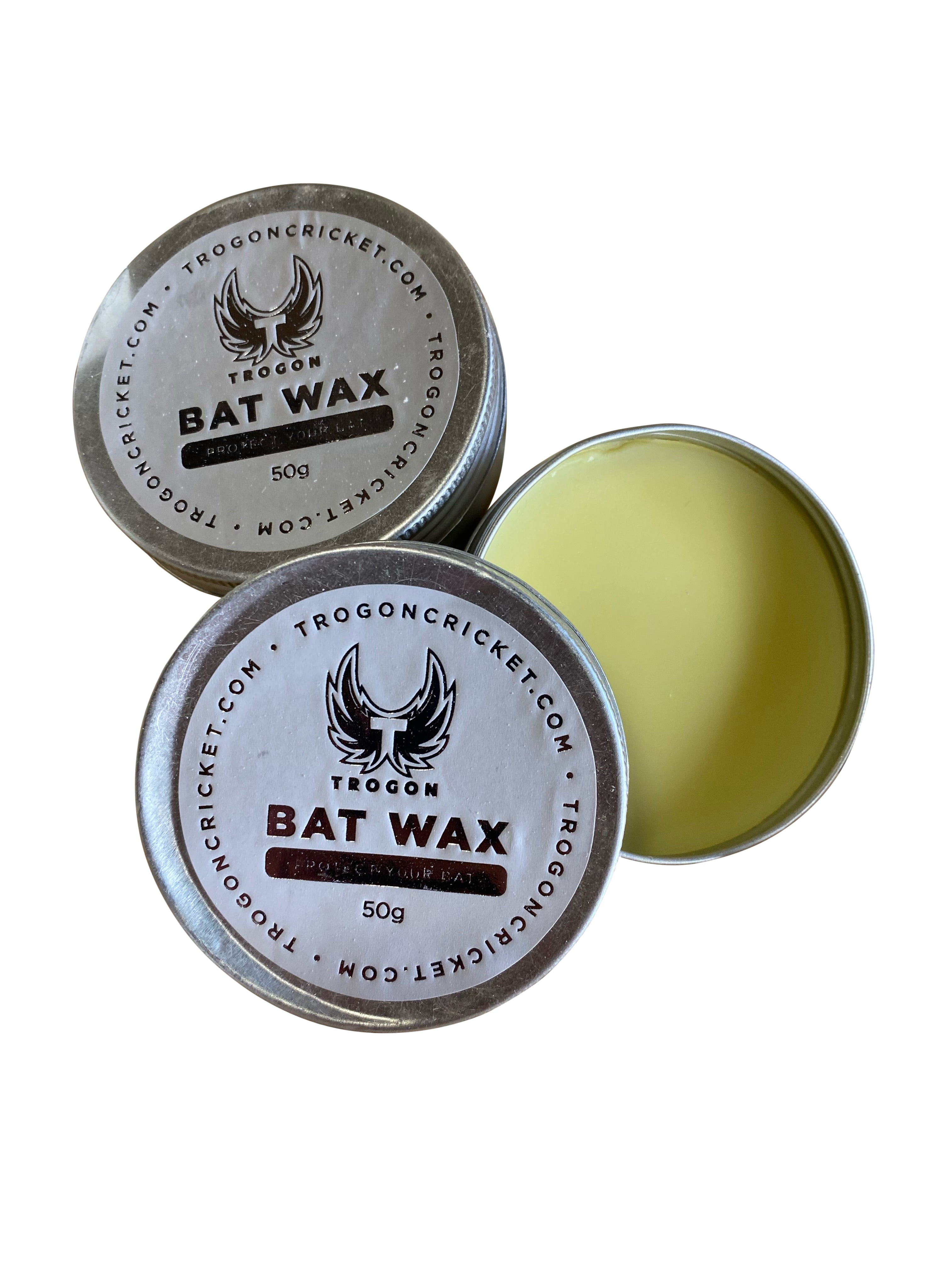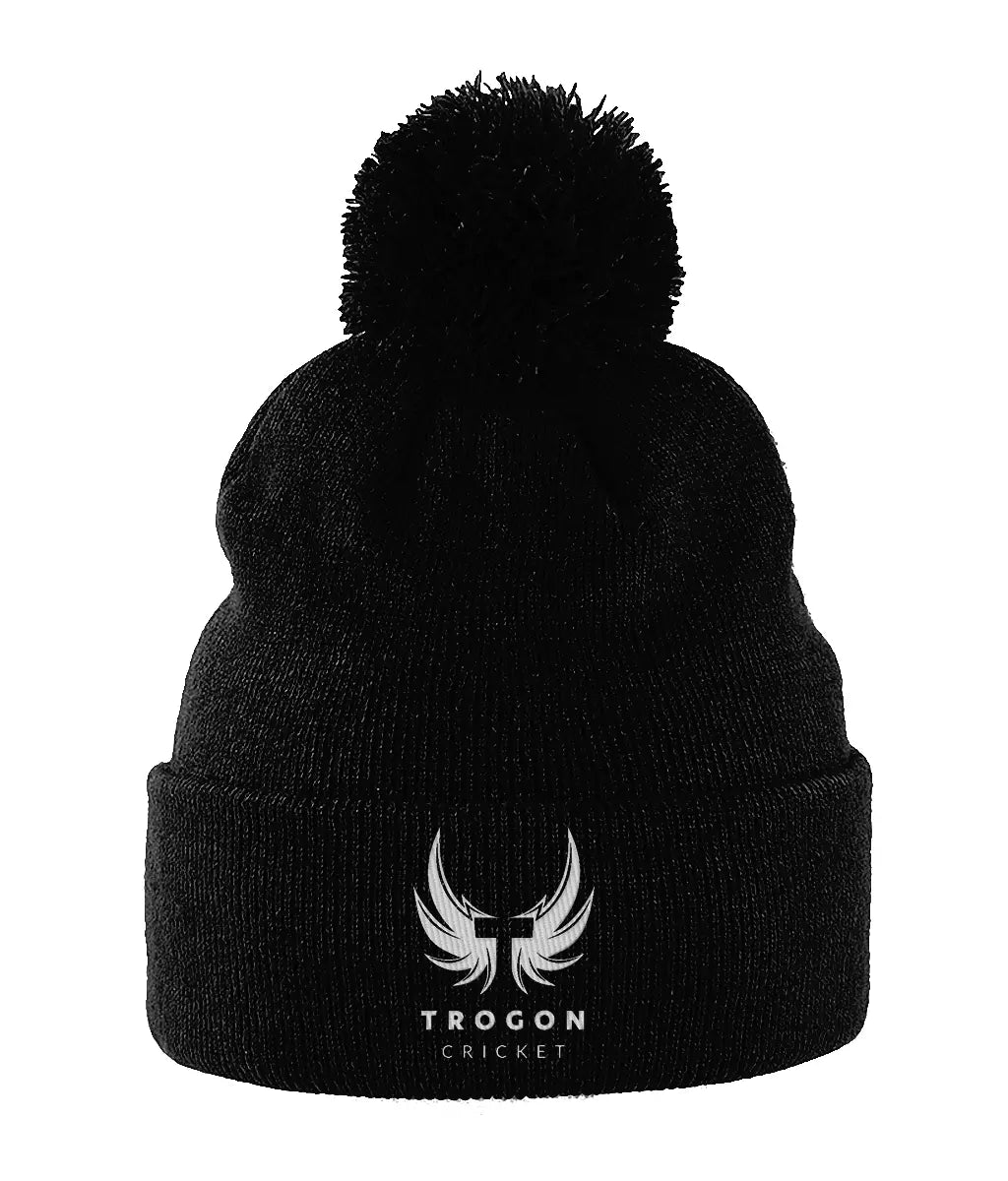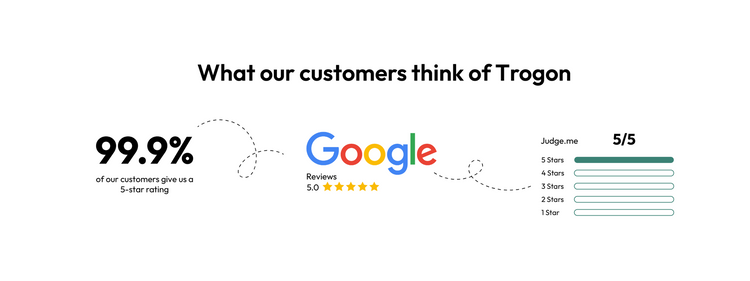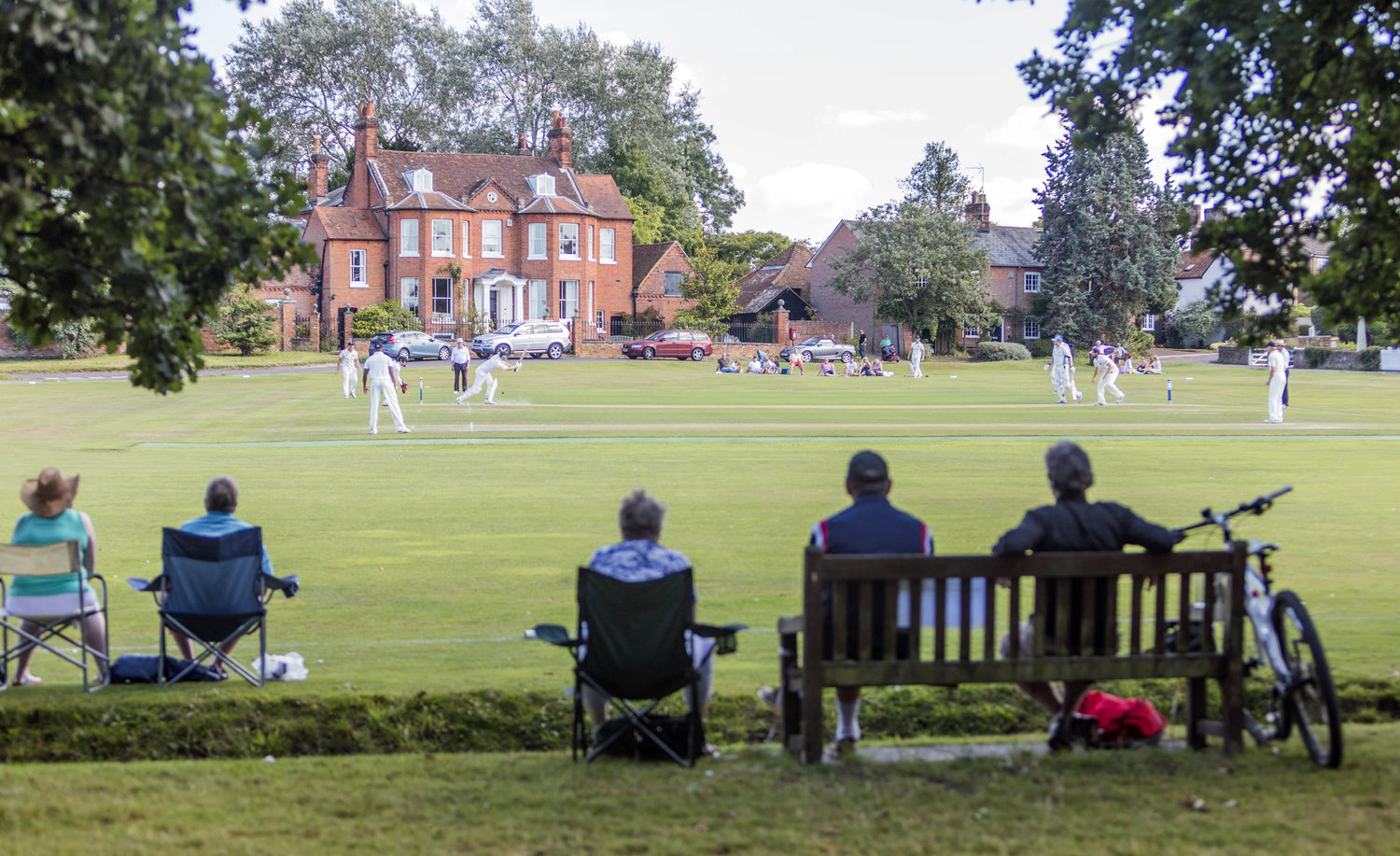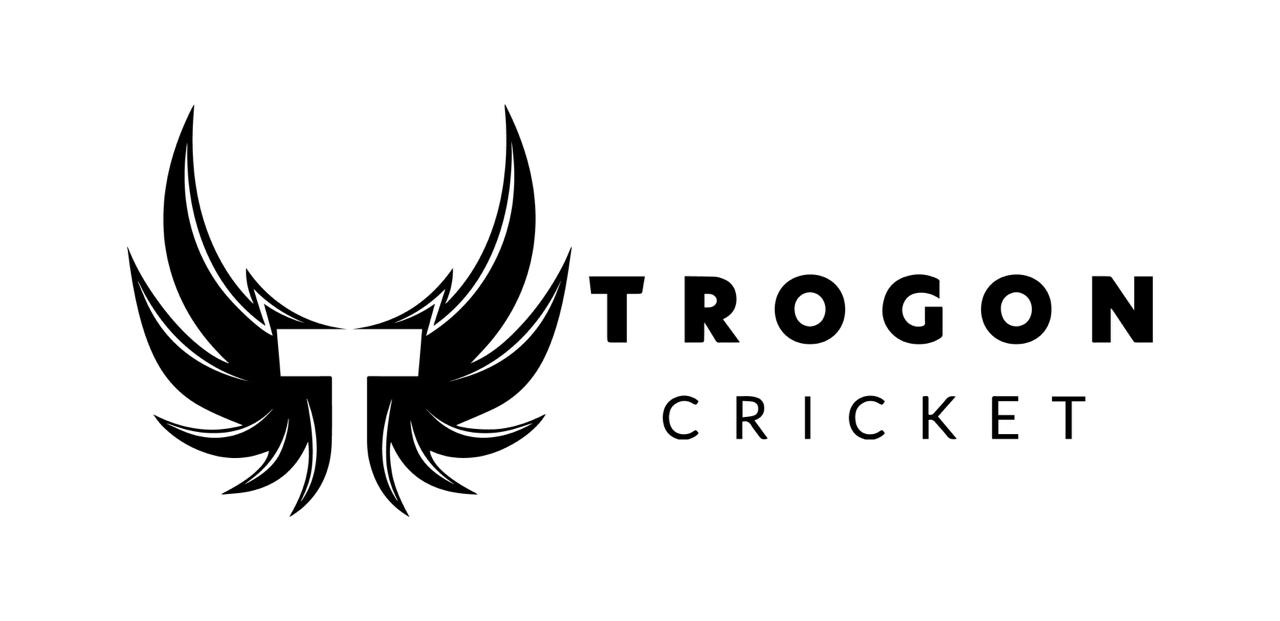As a passionate business owner dedicated to providing the best for our customers, understanding English Willow grades is paramount. It not only determines the look of the bat but deeply influences its performance, durability, and, of course, price.
But what are willow grades?
Willow grades are classifications used to assess the quality of wood used in cricket bats. They are important because they affect the bat's appearance, performance, durability, and price.
Let's dive in and learn more about willow grading and how we grade a Trogon Cricket bat.
The Grading System in Cricket Bat Willow Explained
Selecting the finest piece of willow is the cornerstone of the art of crafting a premium cricket bat.
The grading system in cricket bat willow is an intricate system that ensures batters can find a bat perfectly aligned with their aspirations, needs, and budget and is one of the reasons why cricket bats are so expensive.
Willow grading is mainly based on visual characteristics such as:
-
The straightness and evenness of the grains
-
Number of grains (6 to 12 typically for higher grades)
-
Presence or absence of blemishes, heartwood, or butterfly stains
There's no universal certification body, so grading depends heavily on the bat maker’s eye and experience.
At Trogon, we personally evaluate every cleft using decades of combined craftsmanship, ensuring accuracy and transparency in every grade we offer.
Here's an in-depth look at the grades of willow:
-
Grade 1: Often termed as the pinnacle in willow selection, Grade 1 is every cricketer's dream. With an immaculate, even appearance, straight and closely spaced grains in the cricket bat, and minimal heartwood, it's a thing of beauty. There are hardly any blemishes, and the willow itself is unbleached, retaining its natural colour. When it comes to performance, the Grade 1 willow responds splendidly, offering excellent cricket bat ping. ***At Trogon, we regularly stock G1s***
-
Grade 2: Just a step below the top tier, Grade 2 english willow cricket bats boast a high calibre. While they might display a few minor blemishes or a slightly irregular grain pattern, it doesn't compromise the bat's performance. There might be a hint more heartwood, especially on one side of the bat's blade, but this often becomes an aesthetic preference for many players. In terms of play, it stands toe-to-toe with Grade 1, making it popular among club-level players. ***At Trogon, we regularly stock G2S ***
-
Grade 3 & 4: These grades offer a balance of functionality and affordability. The willows might have more blemishes, an uneven grain pattern, or even a larger portion of heartwood. But it's essential to remember that these so-called 'imperfections' don't drastically hinder the bat's performance. Especially with proper knocking-in with a cricket bat mallet and care, these bats can serve a cricketer reliably over numerous innings and years. The primary distinction is aesthetic, making these grades more budget-friendly and suitable for players who prioritise function over form. At Trogon, we regularly stock G3S
-
Butterfly Grade: The Butterfly Grade is unique and easily recognisable due to the distinct butterfly stain on a cricket bat. Traditionally, these were seen as blemishes, but many cricketers have realised that these bats often perform just as well as their higher-grade counterparts. While not as aesthetically pleasing to some, the Butterfly Grade offers a robust performance profile at a fraction of the price. ***At Trogon, we stock these clefts where available***
-
Emperor Butterfly Grade: The Emperor Butterfly is a premium subset within the Butterfly Grade category. While it retains the signature butterfly stain markings, it stands out due to its exceptional quality. These bats are hand-selected from the most premium sections of the willow cleft, offering top-tier performance and excellent ping and rebound. They’re perfect for cricketers who appreciate both aesthetics and performance. Due to their rarity, Emperor Butterfly clefts are not something we stock regularly at Trogon, but when available, they are a prized offering for those seeking uniqueness without compromise.
-
Blue Willow Grade: The Blue Willow Grade stands out distinctly due to its unique bluish hue, which results from specific soil and weather conditions that favour the growth of the willow tree. This shade doesn't just add an aesthetic charm but often signifies a denser willow cleft. While not as traditional as the other grades, the Blue Willow has garnered attention for its combination of beauty and strength. Its tighter grains indicate durability, and many cricketers believe it offers a slightly different, enhanced ping off the bat. While the "blue" aspect might be seen as a blemish in traditional grading systems, the performance and unique visual appeal of the Blue Willow Grade make it a favourite among cricketers who love to stand out and value performance with a twist. These are few and far between and not something that we stock regularly at Trogon.
While we regularly stock Grade 1, 2, and 3 clefts at Trogon, some unique options like Blue Willow and Emperor Butterfly are sourced only when available. These rare clefts are not part of our standard inventory, but we occasionally offer them in limited runs or special batches, depending on seasonal availability and cleft quality.
Exploring the various willow grades, especially newer, unique grades like the Blue Willow, is a testament to the ever-evolving world of cricket bat-making.
It's about striking the right balance between tradition and innovation. As a dedicated provider of custom-made cricket bats, our mission is to offer you the broadest spectrum of choices, ensuring every cricketer finds a cricket bat that meets their personal playing and budgetary requirements.
Is Grade 5 English Willow Good?
Grade 5 English willow represents the entry-level category of English willow bats. While it shares the same characteristics as higher grades, Grade 5 bats usually contain more visible blemishes, very irregular grains, and sometimes more heartwood.
They’re not stocked by professional or boutique bat makers like Trogon, as the performance and consistency can vary. These bats are best suited to beginners looking for an affordable option for softball or training use rather than competitive matches.

Top Tip
At Trogon Cricket we stock all grades as listed above, unfortunately, due to demand, not all grades are available all the time but I do my best to have them all in stock - to keep informed of new stock arriving, signup to our newsletter at the bottom of the site.
Durability and Performance of Willow Grades
While aesthetics play a role in grading, the durability and performance of willow grades are also crucial. Contrary to common misconceptions, lower-grade willows aren't necessarily less durable. A Grade 3 or 4 bat, with proper care, can last just as long as a Grade 1.
It’s important to understand that visible blemishes or irregular grain patterns in lower-grade willows do not necessarily hinder performance. Many players mistakenly assume that fewer grains or slight discolouration affect how the bat plays. Still, with proper knocking-in and care, even Grade 3 or 4 willows can offer excellent performance and longevity.
These imperfections are mostly cosmetic, and with them, you can find some absolute bargains.
The difference often lies in the "sweet spot" and the overall feel of the bat. Premium willows, especially Grade 1, tend to have a more extensive and more responsive sweet spot, making them a favourite among seasoned players.
Bat Maintenance & Longevity: Keeping Your Willow Match-Ready
A quality cricket bat, especially Grades 2 to 3, will only reach its potential with proper care. Here’s how to maximise your cricket bat’s performance and lifespan:
-
Knocking-In: Gradually compresses the willow using a mallet, preparing it for ball impact. Essential for all bats, especially Grades 2 & 3, once knocked in, use on a bowling machine for 100 balls.
-
Oiling: Maintain the bat’s moisture with 2–3 light coats of raw linseed oil per season.
-
Anti-Scuff Sheets & Toe Guards: Protect against surface damage and cracking.
-
Storage: Store the bat in a cool, dry place, away from direct sunlight, heat sources, and moisture. Never leave it in the garage during the off-season.
-
Refurbishment: At the end of the season, a professional refurbishment can restore the shape, clean the face, reseal the surface, and repair any minor damage.
At Trogon, we provide guidance and support to help you maintain your bat for years to come.
Sustainability in Willow Sourcing
In our commitment to making the best cricket bats, we also ensure sustainability in willow sourcing. It's essential to understand that responsible bat-making doesn't just benefit the environment; it also ensures that the rich legacy of cricket bat craftsmanship endures.
Sustainable practices ensure that for every tree used, more are planted, safeguarding the future of the sport and the planet.
Selecting the Right Willow Grade for Your Custom-Made Bat
For those considering a custom-made bat, selecting the right willow grade is crucial. But the choice isn't solely about budget. It's about understanding your needs as a cricketer.
One of the most frequently asked questions among players is the distinction between English Willow and Kashmir Willow.
Here’s a breakdown:
English Willow (Salix alba var. Caerulea) is grown in the UK and is known for being lightweight, responsive, and high-performing. It's the standard used by professional players because of its excellent ping and balance.
Kashmir Willow, grown mainly in India and Pakistan, is denser, heavier, and more affordable. It’s more durable but requires more effort to generate power and typically offers a smaller sweet spot.
Some key facts:
|
Feature |
English Willow |
Kashmir Willow |
|
Weight |
Lighter |
Heavier |
|
Ping |
Excellent |
Average |
|
Durability |
Good (with care) |
High |
|
Cost |
Premium |
Budget-friendly |
|
Ideal For |
Advanced & Pro Players |
Beginners & Casual Players |
Do International Cricketers Use Kashmir Willow?
Virtually all professional cricketers use English willow bats because of their superior responsiveness and lighter pick-up.
Kashmir willow, while durable and budget-friendly, doesn’t provide the same feel, ping or rebound. Beginners or recreational players commonly use it. English willow’s combination of softness, grain structure, and flexibility makes it the preferred choice at the professional level.
Can You Use Kashmir Willow for Hard Ball?
Yes, Kashmir willow bats can be used for hard-ball cricket, though they’re denser and heavier. Players might find they need more strength to generate the same power as with English willow.
For regular hard-ball matches, English willow remains the better performer, offering a larger sweet spot and superior ping. Kashmir willow bats, however, can be great for net sessions or casual weekend games where durability matters more than finesse, and they are a good option for junior cricket bats.
Is Grade 1 Kashmir Willow Better Than Grade 5 English Willow?
It’s a close comparison, but generally, a well-selected Grade 1 Kashmir willow bat will outperform a Grade 5 English willow bat in consistency and appearance.
However, the responsiveness and feel of English willow will remain unmatched. For players upgrading from softball cricket or limited-overs matches, Grade 1 Kashmir willow can be a great transitional option and a more affordable alternative; however, English willow delivers the top-end performance that many players seek.
At Trogon, we specialise in English Willow bats across all grades, ensuring professional-level quality in every cleft.
-
For the Professionals: A english willow cricket bat grade 1 & players grade cricket bats are often recommended. Its responsiveness, extensive sweet spot, and pristine look make it worth the investment.
-
Club Cricketers: Grade 2 or even a grade 3 english willow cricket bat can be an excellent choice. They offer a balance between performance and affordability.
-
Casual Players: If you're playing just a few games a year, Grade 4 might be sufficient. It's more about enjoying the sport than optimising performance.
How Much Should a Bat Weigh?
While willow grade affects appearance and responsiveness, weight is more about playstyle and comfort. At Trogon, we offer bats in a range of weights:
-
Lightweight (2lb 6oz – 2lb 9oz) – great for timing and fast hands
-
Medium (2lb 10oz – 2lb 12oz) – balance between power and speed
-
Heavy (2lb 13oz and above) – ideal for power hitters
We work with each customer to find the perfect weight for their game, regardless of grade.
As with everything, the weight of cricket bats is subjective, and the pick-up weight should be the weight that all players concentrate on.
Is a 1.2 kg Cricket Bat Heavy?
A 1.2 kg bat equates to approximately 2lb 10oz, which falls comfortably into the medium weight category, and most top players aim for this weight.
For most adult players, this is considered a balanced option, neither too heavy nor too light. What matters more than static weight is the bat’s “pick-up.” At Trogon, we shape each cleft to feel lighter in the hands, so even a 1.2 kg bat can pick up like a lighter one, depending on profile and balance.
Grain Structure: What Tight vs Wide Grains Tell You
When selecting a cricket bat, the visible vertical lines on the cricket bat’s face (grains) can provide insight into the willow's age and performance characteristics.
-
Tight grains (8+): Indicate older willow. These bats are often ready to go, don’t need much knocking-in, but are not as durable in the long run, and if the grains are straight, these make up G1s and sometimes G1+.
-
Wide grains (4–6): Come from younger willow. They usually take longer to reach peak performance, more knocking-in, but in the long run, are more durable. These grains typically make up G3s and G2s.
Contrary to belief, more grains don't always mean better performance. It's more about personal preference; some pros prefer wide grains for explosive play, while others value tight grains for consistency and control.
How to Identify a Popular Willow Bat
A popular willow bat is usually recognised by its clean grain structure and consistent performance feedback. Look for evenly spaced grains on the face, but these grains don't stand out as prominently as those on English willow. Some can have a light pick-up and a clear ping when tapped with a ball, but their performance and aesthetics don't compare to those of English willow.
At Trogon, our English willow bats combine these elements with personal grading to help players find the perfect match, and we only stock English Willow.
Navigating Price Variations Among Willow Grades:
The willow grade plays a significant role in determining the price of a cricket bat. Each grade, with its unique features and quality, has its price bracket in the industry.
While prices can vary widely between manufacturers and regions, here's a general industry breakdown to give you an idea:
-
Grade 1: Being the finest quality, Grade 1 bats are often priced at a premium. You can generally expect these bats to range between £400 and £650, reflecting their pristine condition and superior performance - you can order a grade 1 english willow cricket bat.
Some manufacturers use terms like Grade 1+ or Pro Grade to describe the absolute best clefts within the Grade 1 category. These are the top 5–10% of clefts with the most perfect, unblemished appearance, evenly spaced, straight grains, and excellent natural balance.
At Trogon, we carefully inspect every Grade 1 cleft we receive, and where appropriate, we label exceptional pieces as “Grade 1+” to help our customers find true pro-level quality.
-
Grade 2: Just a step below the premium Grade 1, these bats offer excellent value. Typically, a Grade 2 bat ranges from £300 to £500, striking a balance between quality and affordability.
-
Grades 3 & 4: These grades offer functional, reliable bats for those on a budget. Prices can range anywhere from £150 to £350, depending on the brand and specific features.
-
Butterfly Grade: Given its unique appearance and reliable performance, Butterfly Grade bats are generally priced between £200 and £250 - when in stock.
It's crucial to remember that these price points are generic industry standards. For specific pricing tailored to our craftsmanship, unique features, and the quality we bring to every bat, please visit our online shop or book an appointment to visit my workshop.
Our commitment is to ensure that you get value for every pound spent, aligning quality with cost-effectiveness.
What Is the Price of a Grade 1 Kashmir Willow Bat?
On average, a Grade 1 Kashmir willow bat costs between £100 and £180, depending on the manufacturer. These bats are often used by developing players who want good performance without the higher cost of English willow.
The affordability makes them a popular choice for schools and junior setups. However, they typically lack the lighter pick-up and ping found in premium English willow models, but are a great option for younger players, especially if they plan to play all summer in the park, garden, or on the road with their friends.
Which Bat Is ICC Banned?
There are no ICC bans related to willow grades; English willow and Kashmir willow bats are both legal to use. The MCC only regulates bat dimensions and materials (such as blade thickness, edge size, and the use of metal or composite inserts). If you watch the IPL regularly, you will see the umpire use the bat gauge to make sure the bat meets these requirements.
Every Trogon bat is made within ICC-approved specifications, ensuring they’re match-ready for all levels of cricket, from club to professional play.
In Conclusion
Choosing the right willow grade isn't just about looks; it's about matching a cricket bat to your playing style, level, goals, and, of course, your budget.
Whether you're an aspiring pro looking for a premium Grade 1 or a casual weekend player seeking value from Grade 2 or 3, the right bat can elevate your performance and enjoyment of the game.
At Trogon, we take pride in offering hand-selected English Willow clefts, made into bats that are built for power, precision, and longevity. Every cleft is personally graded, and every cricket bat is made with performance and player satisfaction in mind.
Ready to find your perfect bat?
-
Explore our range of Grade 1 to Grade 3 English Willow bats.
-
Ask about our limited-edition Butterfly and Blue Willow stock.
Let us help you take the next step in your cricket journey, with a bat that’s crafted for your game, your goals, and your greatness.
17 Key Things to Know About Willow Grades
-
Grade 1 English Willow
The highest quality willow with perfect grains, minimal blemishes, and superior performance. Ideal for professionals. -
Grade 2 English Willow
High-performing with minor blemishes. Popular among serious club players. -
Grades 3 & 4 Willow
Affordable, functional options with more visual imperfections, but still excellent playability when properly prepared. -
Butterfly Grade Willow
Recognised by its stain pattern. Durable, budget-friendly, and often underrated. -
Emperor Butterfly Grade
A rare, premium variant of Butterfly Grade offering high performance and a unique aesthetic. -
Blue Willow Grade
Known for its distinctive bluish hue and denser wood. Visually unique and performance-driven. -
Durability and Performance Across Grades
With proper care, even lower-grade willows can perform brilliantly and last for years. -
Sustainability at Trogon
All our willow is sourced responsibly, ensuring environmental stewardship in every bat we craft. -
Choosing the Right Grade for Your Game
Grade 1 for pros, Grade 2/3 for clubs, and Grade 4 for casual players. -
English Willow vs. Kashmir Willow
English willow is lighter and offers better ping; Kashmir willow is heavier and more durable but less responsive. -
Grain Structure Explained
Tight grains = longer lifespan; wide grains = faster performance. Both are valid; it’s a matter of personal preference. -
Pro Grade / Grade 1+ Willow
The top 5–10% of Grade 1 clefts have exceptional grain and almost no blemishes. Think elite-level. -
Willow Weight Matters Too
Weight is not directly tied to grade; light bats offer faster hands, while heavy bats offer more power. Find your balance. -
How Willow Grading Works
Grading is visual, based on grains, blemishes, and heartwood, with no universal standard. Trogon grades each cleft in-house. -
Aesthetics & Performance
Don’t be fooled by blemishes; they rarely affect how a cricket bat plays. Focus on feel, pick-up and preparation. -
Stocking Policy for Rare Grades
Emperor Butterfly and Blue Willow are stocked only when available. Get them while they last. -
Cricket Bat Care & Maintenance
Knocking-in, oiling, protective sheets, and seasonal refurbishments are key to long bat life and consistent performance.
Playing Our Part in Your Cricket Story
We know that cricket is more than just a game; it’s a passion, a community, and a lifetime of memories. That’s why every Trogon bat is made with care, dedication, and pride. We see our role as more than just bat makers; we’re part of your cricket journey.
From the first knock in the nets to the biggest innings of your career, we want to be there with you.
Choosing Trogon means choosing a bat made with honesty, integrity, and the same love for the game that you carry to the crease.
Trogon Product Guarantee
When you buy from Trogon, you’re covered by our 6-month bat guarantee. If your bat cracks or breaks within that period and has been knocked in correctly, we’ll replace it with a new one, simple, fast, and hassle-free. Combine that with your statutory online protections, and you can shop with total peace of mind.
